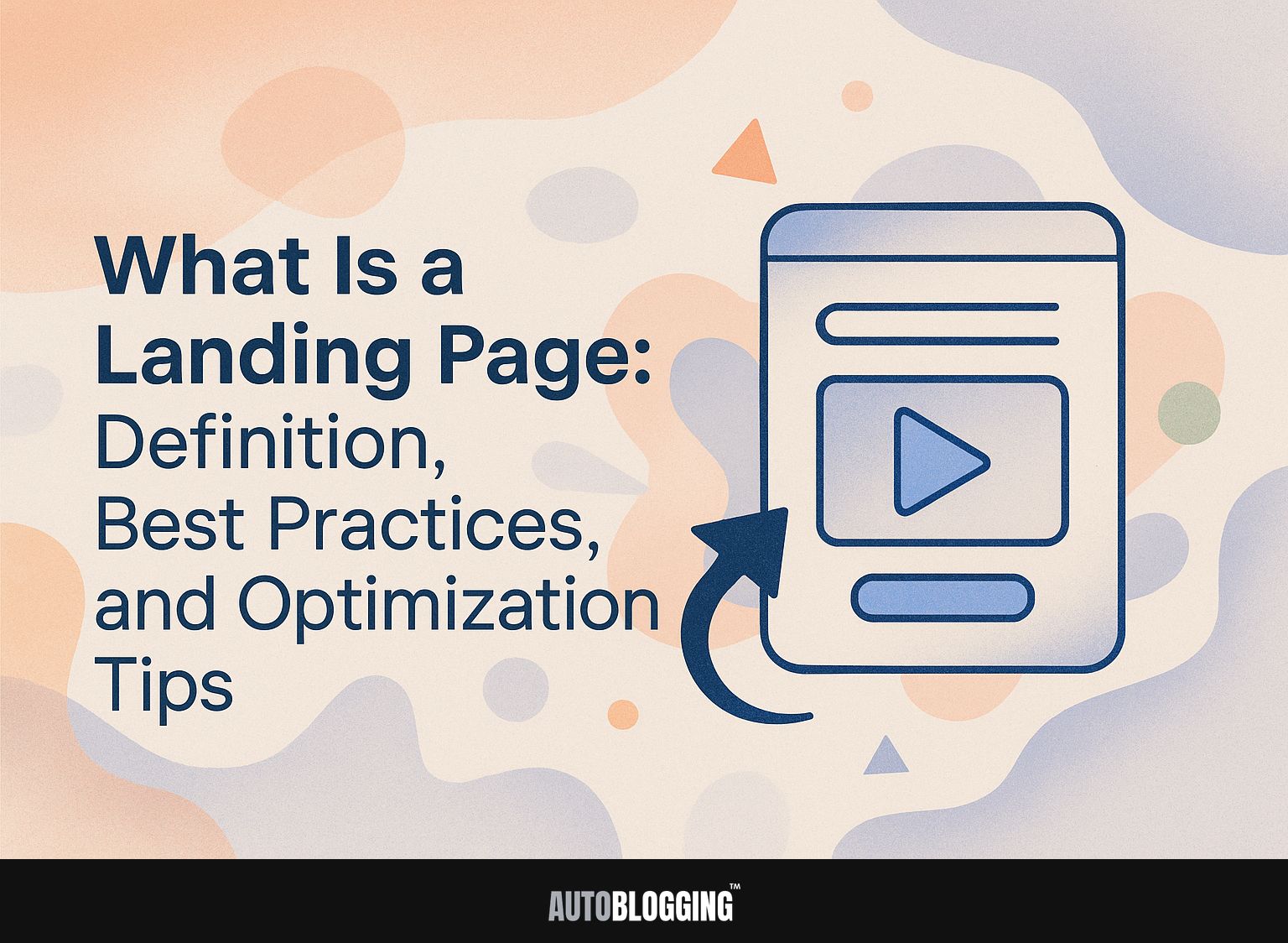
Improving your landing page is essential for generating leads effectively. By learning how to track user behavior with tools like Google Analytics 4 and advice from marketing professionals like Apexure and IMD, you can greatly increase your conversion rate. This article explains what a landing page is, looks at how it is used in online marketing, and provides tips to improve your marketing plan. Learn how to make your landing pages strong tools for achieving success.
Key Takeaways:
- Landing pages are important in online marketing for turning website visitors into potential customers or clients.
- Effective landing pages have clear headlines, engaging visuals, strong CTAs, and minimal distractions.
- Increasing conversion rates and encouraging business growth can be achieved by enhancing landing pages through A/B testing, heatmaps, and SEO methods.
Contents
- Types of Landing Pages
- Best Practices for Designing Effective Landing Pages
- Key Elements of a Successful Landing Page
- Optimization Tips for Landing Pages
- Common Mistakes to Avoid
- Frequently Asked Questions
- 1. What is a Landing Page?
- 2. What is the Definition of a Landing Page?
- 3. What are the Best Practices for Creating a Landing Page?
- 4. How Can I Make My Landing Page Better for Conversions?
- 5. Why is it Important to Have a Landing Page for my Marketing Campaign?
- 6. Can I Use a Landing Page for Different Types of Campaigns?
1. Definition of a Landing Page
A landing page is a standalone web page created specifically for a marketing or advertising campaign, aimed at encouraging visitor action via a CTA (call-to-action) button. These pages typically serve distinct purposes, such as capturing leads or promoting specific products.
For instance, a newsletter signup page might feature a simple form for email entries, while a product launch page emphasizes product benefits and showcases customer testimonials.
Key features that make landing pages different from standard web pages include minimal links, clear communication, and one main goal for the user.
Using tools like Unbounce or Leadpages can make it easier to create landing pages that turn visitors into customers more successfully.
2. Importance of Landing Pages in Digital Marketing
Landing pages significantly influence the effectiveness of digital marketing efforts, often serving as the first point of interaction for potential customers.
Improving these pages can greatly raise conversion rates. For instance, businesses with dedicated landing pages see 50% more leads than those without.
To make your efforts more successful, use a clear call-to-action (CTA), like an eye-catching button. Use tools like Unbounce or Leadpages to make designs that help increase conversions fast.
Testing different headlines or images can help you understand what works best with your audience. Regularly analyze metrics, ensuring continuous improvement and alignment with your marketing goals.
Types of Landing Pages
Knowing the different types of landing pages is important for shaping your marketing goals and increasing conversions. It’s crucial to understand the factors that influence online visibility, including page authority. Worth exploring: What is Page Authority (PA): Definition, Key Factors, and How to Improve to enhance your landing pages’ effectiveness.
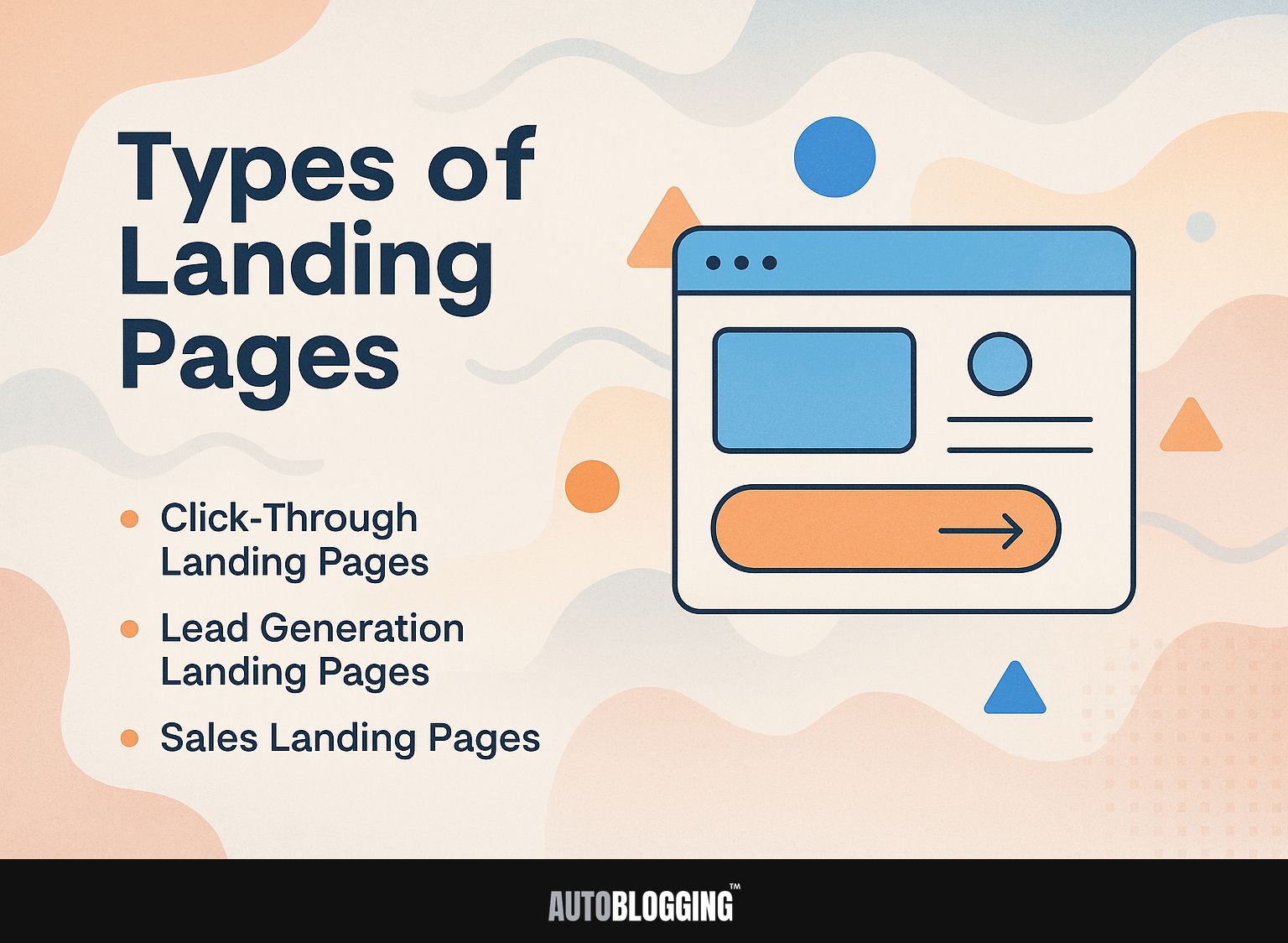
1. Click-Through Landing Pages
Click-through landing pages are designed to lead visitors to another page, often used in e-commerce where the goal is to prepare the customer for a purchase.
These pages typically feature eye-catching titles, clear images, and concise text that emphasizes the benefits of the product.
For example, a product landing page for a new gadget might include an eye-catching image, customer testimonials, and a strong call-to-action like “Buy Now”.
To improve results, think about using tools like Unbounce or Instapage, which let you run A/B tests to increase conversion rates. By looking at how people use your site with Google Analytics, you can change things like where buttons are or the text to increase interaction and sales.
2. Lead Generation Landing Pages
Lead generation landing pages gather visitor information, often using forms, in exchange for content like eBooks or webinars.
To create an effective landing page, prioritize a clear headline that sparks interest and outlines the offer. A headline like “Get Expert Tips with Our Free eBook” is inviting and informative.
Use tools like Unbounce or Leadpages, which offer templates you can change to make designing easier. Keep your form brief by only asking for a name and email to make it easier for potential leads to complete.
Adding a call-to-action button like “Get My Free eBook Now!” can greatly increase the number of conversions.
3. Sales Landing Pages
Sales landing pages focus on convincing visitors to make a purchase, often showcasing products, testimonials, and urgency techniques.
Effective elements of a successful sales landing page include user trust signals, such as customer testimonials and recognizable brand partnerships.
Using urgency techniques, such as offers with time limits or countdowns, can lead potential buyers to decide faster.
For example, Starbucks effectively uses seasonal promotions, emphasizing scarcity and unique flavors to drive sales.
Utilizing high-quality images and clear call-to-action buttons simplifies the purchase process. Aim for a layout that flows intuitively, guiding the visitor toward conversion while maintaining clarity and visual appeal.
Best Practices for Designing Effective Landing Pages
Using effective strategies in landing page design can greatly improve how users engage with your site and turn visitors into customers.
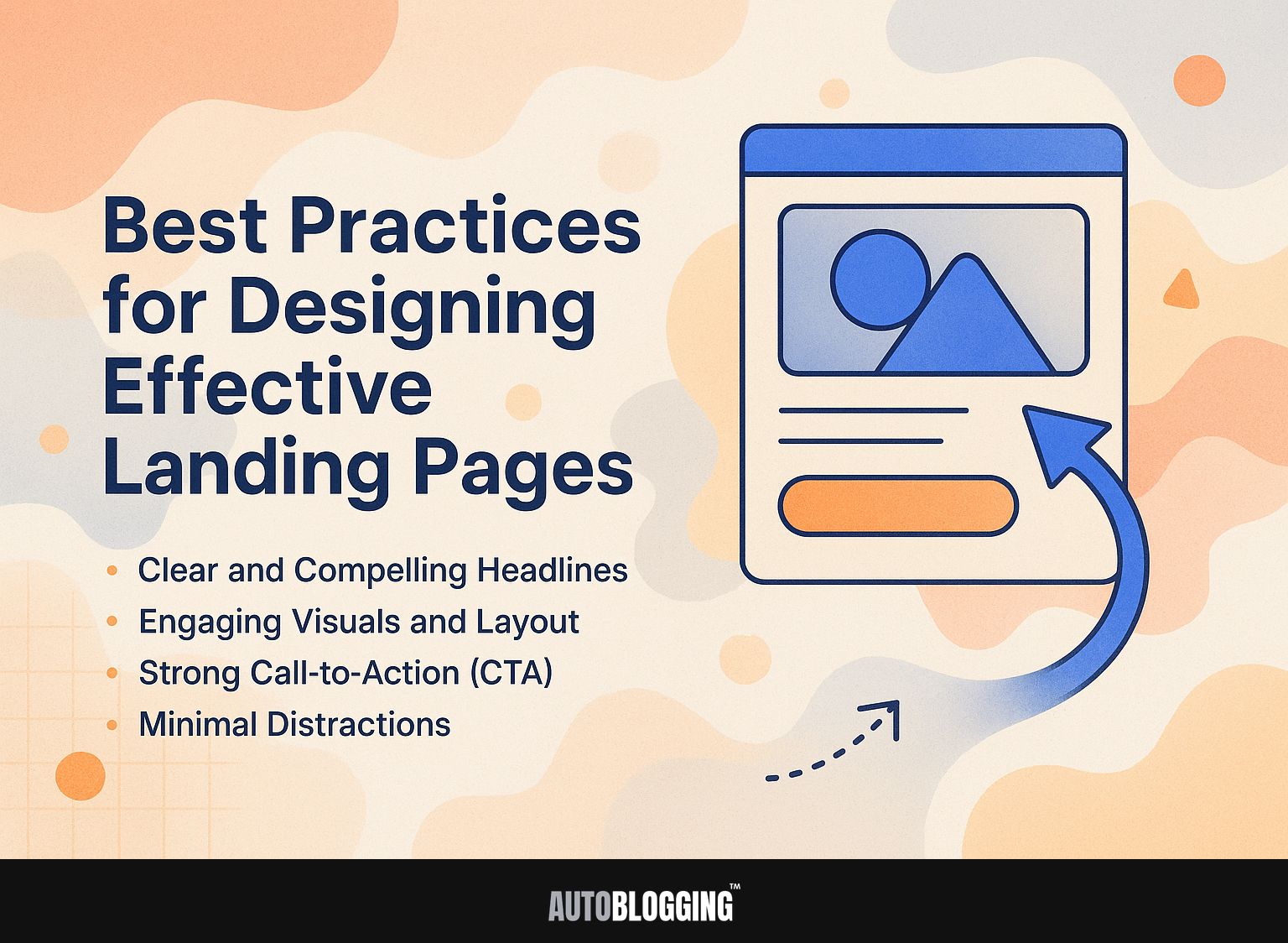
1. Clear and Compelling Headlines
An effective headline is important because it influences whether visitors choose to remain on the page. To write effective headlines, use relevant keywords that match what users are looking for.
For example, instead of “Tips for Healthy Living,” try “10 Science-Backed Tips for a Healthier Lifestyle.” This provides more detail and matches what people search for.
Tools like CoSchedule’s Headline Analyzer can help you evaluate potential headlines for length, emotional impact, and word balance.
Using numbers or posing questions can increase engagement, such as, “How to Achieve Work-Life Balance in 5 Simple Steps.”
2. Engaging Visuals and Layout
Visuals that draw attention, along with a simple design, can greatly increase user interest and lower the number of visitors leaving landing pages quickly.
To achieve this, use high-quality images that appeal to your intended viewers. Tools like Canva can help create customized graphics, while Unsplash offers free stock photos.
Adding videos can increase interest; think about using platforms like Vimeo or YouTube. Make sure your text is easy to read and that there is enough white space, so users can move around the page without difficulty. A balanced mix of images and organized text makes visitors stay longer.
3. Strong Call-to-Action (CTA)
A clear instruction encourages users to follow your desired action, which is important for getting more people to take the steps you want.
To create effective CTAs, focus on three key parts: placement, wording, and layout. To make sure people see your call to action, put it where it’s easily noticeable-like Shopify’s “Start Free Trial” button at the top of their homepage.
Use action-oriented language that creates urgency; for instance, phrases like “Get Started Now” or “Claim Your Discount” can be highly effective.
Design is important-use different colors and plenty of space to make your CTA noticeable. Trying out different versions through A/B testing has helped improve performance, as shown by BuzzFeed’s campaigns that increased their conversion rates greatly.
4. Minimal Distractions
Reducing distractions on a landing page helps to keep the visitor focused on the primary goal, which can significantly improve conversion rates.
To achieve this, start by simplifying your design. Use a clean layout with ample white space to draw attention to key elements.
Tools like Crazy Egg can help you analyze user engagement, revealing which areas of your page get the most attention. To further minimize distractions, eliminate unnecessary links, and avoid pop-ups that might steer users away from the main call-to-action.
Consider using a single-column layout, as it directs the eye naturally towards your content and conversion button.
Key Elements of a Successful Landing Page
Key elements of a successful landing page include trust signals, a clear value proposition, and ensuring mobile compatibility.
These all help increase how many visitors take action. If you’re interested in learning more about enhancing these aspects, our guide to meta description best practices provides valuable insights.
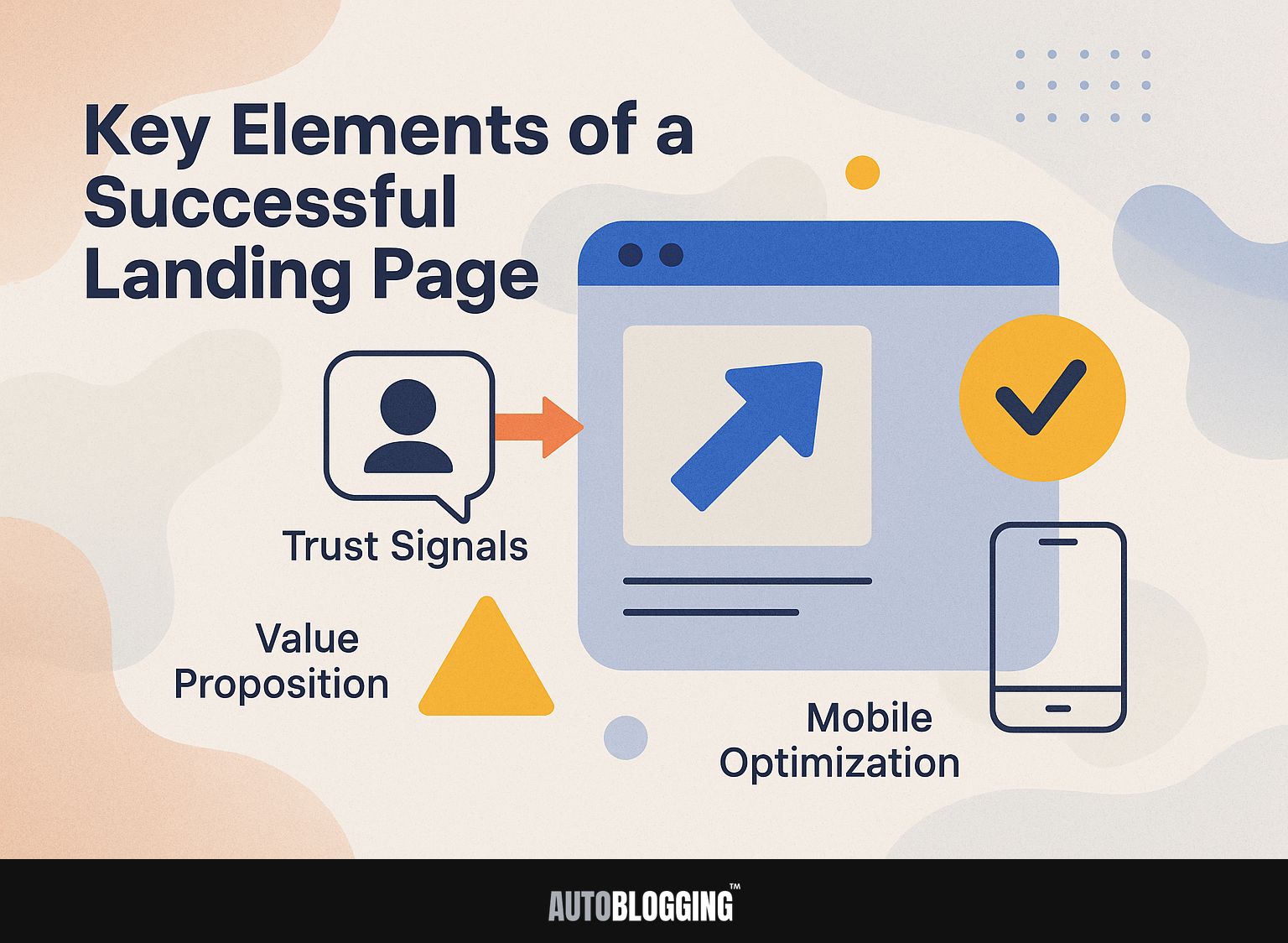
1. Trust Signals (Testimonials, Reviews)
Adding trust signals like testimonials and reviews can greatly improve credibility and convince visitors to take action.
To effectively implement these trust signals, consider prominently displaying testimonials near key action points like sign-up forms or product showcases.
For instance, Dropbox strategically places user testimonials on their homepage, showcasing real-world benefits and positive experiences.
When selecting impactful reviews, choose those that highlight specific features or outcomes, such as increased productivity or seamless integration with other tools.
Using tools like Yotpo or Trustpilot can help gather and display these reviews automatically, further enhancing user trust in your brand.
2. Value Proposition
A strong value proposition clearly articulates the benefits of your offering, helping potential customers understand why they should choose you over competitors.
To create a strong value proposition, concentrate on being clear and specific. Identify your target audience’s primary pain points and articulate how your product resolves them.
For instance, Buffer’s value proposition emphasizes saving time on social media management, directly addressing users’ need for efficiency. Dropbox makes sharing and accessing files easy for users on different devices.
Use tools like the Value Proposition Canvas to improve your message and try it out on potential customers to get their opinions. This process helps make sure your value proposition connects with people and is noticed in a crowded market.
3. Mobile Optimization
Over half of website visits come from mobile devices, so it’s important to make landing pages easy to use on phones to boost user engagement.
- Begin by implementing responsive design, ensuring your website adjusts seamlessly to different screen sizes. Tools like Google’s Mobile-Friendly Test can help you analyze how your pages perform on mobile.
- Next, prioritize fast loading times; aim for under three seconds using tools like GTmetrix or Pingdom for regular assessments. Consider using Hexometer to monitor performance, receiving alerts on issues that may arise.
- Make things simpler for people using mobile devices by having clear menus and larger touch targets to make their experience better.
Optimization Tips for Landing Pages
Constantly improving landing pages is important. One effective approach is focusing on organic search strategies.
Use different tools and methods to get better performance numbers. To understand the benefits and optimization techniques of organic search, consider exploring various resources.
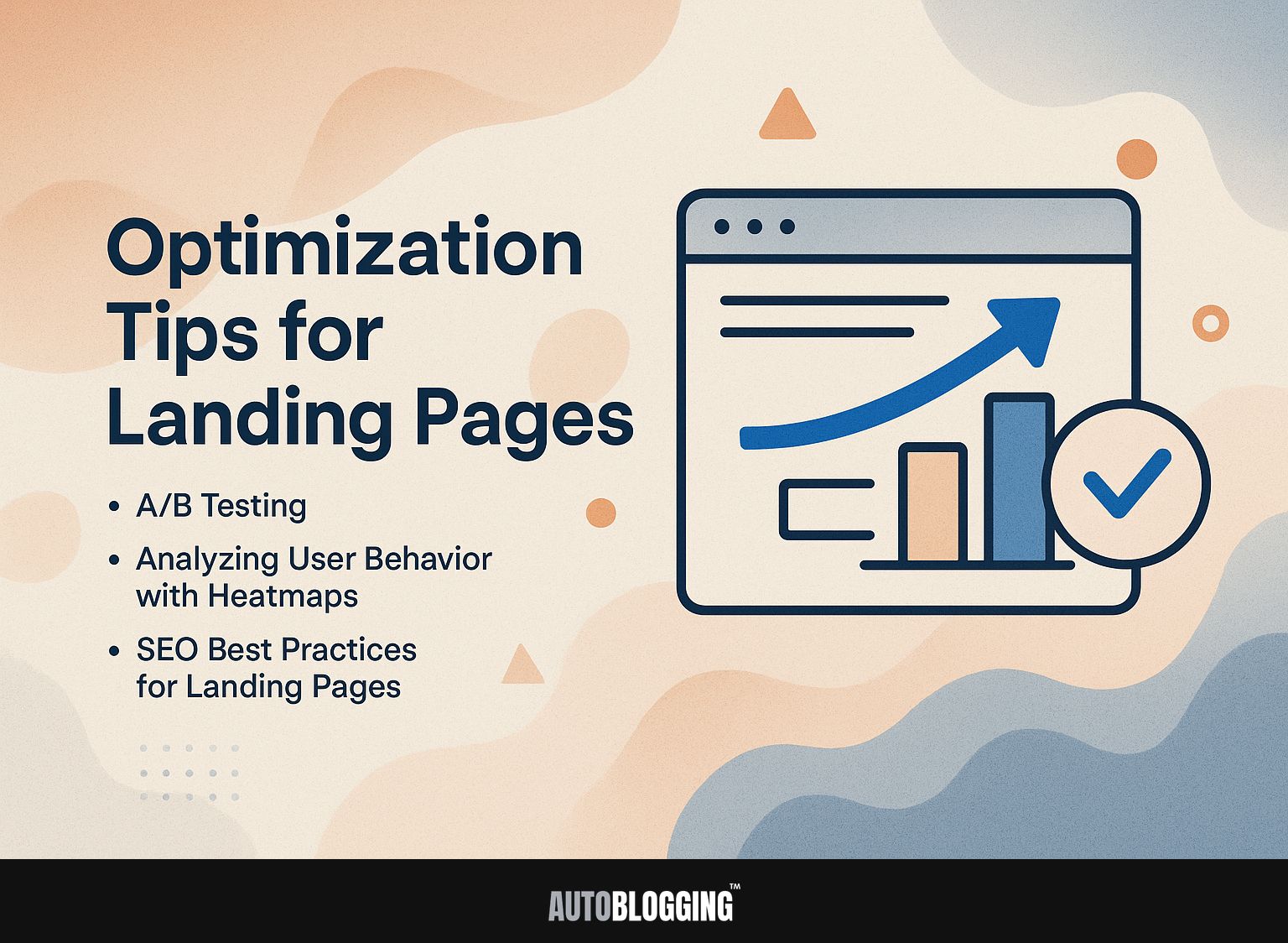
1. A/B Testing
A/B testing allows marketers to compare two versions of a landing page to determine which one performs better in terms of conversion rates.
To set up effective A/B tests, start by defining your objective, such as improving signup conversions.
Use VWO or Unbounce to create two variations of your landing page. Track essential metrics like conversion rate, bounce rate, and session duration to gauge performance.
For example, measure how well a red CTA button outperforms a green one by analyzing these metrics over a week. Running tests for at least two cycles makes the results statistically reliable, helping you improve your page for better outcomes.
2. Analyzing User Behavior with Heatmaps
Heatmaps show where people focus their attention on a webpage, pointing out spots they find interesting and places where they might have trouble moving around.
- To implement heatmap tools like Crazy Egg, start by signing up for an account and installing the tracking code on your website, which usually takes just a few minutes.
- Once data begins to accumulate, analyze the heatmaps to see where users click most frequently and where they scroll.
- Look for patterns: if users consistently ignore important buttons due to placement, consider relocating them to more engaging areas.
- Regularly checking this information will help you improve your layout, leading to better user interaction and higher conversion rates.
3. SEO Best Practices for Landing Pages
Implementing SEO best practices on landing pages can help improve visibility and attract higher traffic, essential for effective lead generation.
Begin by researching keywords to find words that matter to your audience. Tools like Google Keyword Planner or SEMrush can help you find keywords with high search volume and low competition.
Place these keywords naturally in your page titles, headers, and within the content. Make sure your meta tags are effective. Keep title tags short, ideally less than 60 characters, and include your main keyword.
Remember to monitor landing page results using Google Analytics 4. This tool lets you study how people interact with your page and adjust your plans using up-to-date information.
Common Mistakes to Avoid
Avoiding common mistakes in landing page design is key to keeping users interested and achieving high conversion rates.
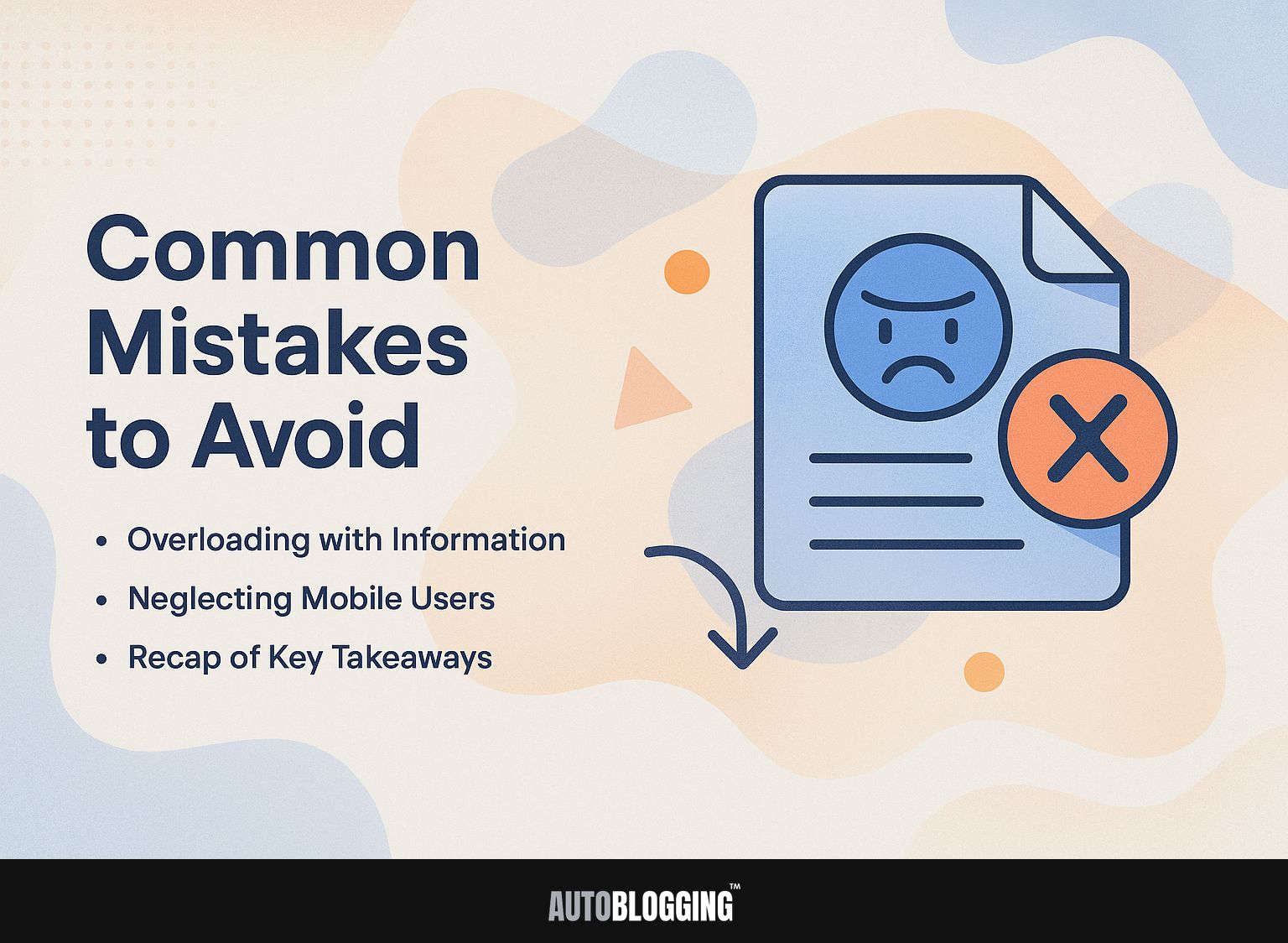
1. Overloading with Information
Overloading landing pages with excessive information can overwhelm visitors, leading to high bounce rates and decreased conversions.
To organize content well, prioritize clear and simple language. Start by utilizing a minimalist design that prioritizes essential elements, such as a clear call-to-action (CTA) prominently placed above the fold.
Limit text to no more than 100 words and use bullet points to highlight key benefits. For instance, if promoting a subscription service, simply state:
- Save 20% on annual plans
- Access exclusive content
- Receive personalized support
Tools like Unbounce or Instapage can help in designing clean, high-converting landing pages, allowing you to test variations for optimal performance.
2. Neglecting Mobile Users
Neglecting mobile optimization can alienate a significant portion of your audience, adversely impacting user experience and conversion rates.
To make landing pages work well on phones, begin with a design that automatically fits various screen sizes.
Use tools like Google’s Mobile-Friendly Test to evaluate your current performance. Next, prioritize loading speed; consider compressing images and utilizing a content delivery network (CDN).
Minimize text inputs by implementing auto-fill features and keeping forms short. Make sure that call-to-action buttons are easy to tap, with a recommended height of at least 44 pixels. These strategies will create a more engaging experience, driving higher conversions from mobile visitors.
3. Recap of Key Takeaways
Main points from our talk are the importance of clear benefits, interesting images, and frequent A/B testing to improve how well landing pages work.
To make your landing pages better, consider making these specific changes:
- Make your calls to action simple so users know what to do.
- Use clear and appealing images that connect with your audience.
- Make mobile-friendly changes to improve access.
Tools like Google Optimize help test different versions of a webpage. They let you test different headlines or designs to find out which ones get more conversions. Regularly review analytics to track user behavior and adjust your strategies accordingly. Talking to your audience and getting their feedback can help you make ongoing improvements.
Frequently Asked Questions
1. What is a Landing Page?
A landing page is a standalone web page that is designed to capture a visitor’s information and convert them into a lead or customer. It usually aims for a particular result, like asking people to fill out a form or buy something.
2. What is the Definition of a Landing Page?
The definition of a landing page is a web page that is specifically created for a marketing or advertising campaign, with the goal of generating leads or conversions. It is separate from a company’s main website and is often used for targeted promotions or offers.
3. What are the Best Practices for Creating a Landing Page?
Some good tips for making a landing page are to have a clear and short headline, use attractive images, keep the page design simple and easy to use, and add a strong call-to-action that matches the page’s purpose.
4. How Can I Make My Landing Page Better for Conversions?
To improve the effectiveness of your landing page, you can test different versions of elements like the design, text, and call-to-action to see which works best. You can also make sure the page is mobile-friendly, load time is fast, and the form is easy to fill out. Using a clear and persuasive value statement can also lead to more conversions.
5. Why is it Important to Have a Landing Page for my Marketing Campaign?
A landing page helps you highlight a particular deal or promotion and gather important details from visitors who are interested. It provides potential customers with a clear method to take action, making it a key part of any successful marketing campaign.
6. Can I Use a Landing Page for Different Types of Campaigns?
Yes, landing pages can be used for various types of campaigns, such as product launches, lead generation, event registration, and more. The key is to customize the page to the specific campaign and its goals to achieve the best results.
